This post gives another example of one where the title is not what it was originally intended to be. Specifically, at this point I had planned on writing a post labeled Three Rectangles,
but, once again, travel bureaucracy twisted its grip around my plans, causing me to eliminate a rectangle, and this time the cause had little to do with the coronavirus. When I cobbled together a revised Tour plan for the end of 2020, one that would take me to West and Central Africa on short notice, the first destinations were to be Ghana, Togo, and Benin, three relatively small countries located on the Gulf of Guinea each shaped, more or less, as a rectangle with a north-south orientation. I selected them because they are located in a part of the continent I had not yet visited, have long been generally stable, are all home to some great birds, and, most importantly, had all recently reopened to tourism.
While that reopening was helpful for me, it did come with significant strings attached, and strings always imply added costs and delays, which was certainly the case here. The most relevant of those was that all of the land border crossings in the region were still closed, so any travel to, and between, the countries needed to be through the international airports, located in the respective coast-hugging capitals. This was, in part, because the facilities for administering the required covid tests upon arrival, and again before departure, are located in the terminals. Right away, that forced me to again grudgingly bend my long-held policy of avoiding air travel, and also drastically affected the routing I would need to choose for the cycling portion of this section, where the rectangular shapes of the countries would also come into play. Ideally, with the longitudinal orientation of the three countries, one would prefer to ride to the northern area of one, cross overland into the neighboring country, and then ride back to the south once there. This would keep the overall distance reasonable and minimize any duplicate riding over the same routes. However, by necessity, my route in this region would need to be somewhat less friendly.
The other important choice was where to begin this section. I had vague ideas of moving towards the east and south after finishing in West Africa, and, in that case, beginning in Ghana then continuing eastward through Togo and Benin would be best. However, visas are required for all three countries and I was not able to apply for a Visa for Ghana at its consulate in Istanbul, foreshadowing troubles yet to come, so I had to go with the opposite route, starting in Benin and traveling west, for the time being. Benin has a simple eVisa process and Turkish Airlines had a direct flight from Istanbul to its largest city and commercial capital, Cotonou. While it was a significantly more lengthy flight than my personal rules for the Tour would normally allow, not to mention being quite a bit more costly, I had few other options available. So, I boarded that aircraft, successfully for a change, and, after an annoyingly long wait, was finally able to depart Turkey.
Benin’s recently-introduced policies for arrivals in the covid era were simple enough, but the overall experience was a little mixed. With testing to be performed upon arrival, I was not required to take a test before boarding the flight in Istanbul, so after two previous wasted tests taken there I was slightly relieved to bypass that process this time. Once the flight arrived in Cotonou, late in the evening, all passengers were taken to a large tent on the tarmac for screening and sample collection. The cost was $US 92.00 which covered a fast antigen test and a full PCR test. Once the screening showed negative, passengers could leave, and the whole process was surprisingly efficient and well organized, taking just around forty minutes in my case. The drawback was that the PCR result would take seventy-two hours and passports were held by the immigration department until then. Picking up the negative result at the National Congress building later was noticeably slower and more laborious because, while the sampling was done one plane-load at a time, results were released for all arrivals at the same place and at the same time, causing long lines and delays. Additionally, being in a French-speaking country, the process was a bit more confusing for someone like me. Nevertheless, after a few days lounging around in the capital, I had my negative result, as expected, and was finally able to get the Tour rolling again.
Over the years I have visited over a dozen countries in Africa, so I had a good idea about what to expect this time. However, every region has its distinct characteristics, so here are some general observations regarding Benin and the area in general. Cotonou, where I spent more time than I would normally have done, is in many ways a typical capital city of a country at this level of development, but I quickly came to the opinion that in terms of esthetics and urban design it was distinctly below average. On the bright side, the level of congestion and pollution was marginally—very marginally—lower than other cities in this category, so navigating in and around the city was a little easier, though not particularly enjoyable. Heading north, the urbanized craziness diminishes after about forty kilometers, transitioning to a semi-agricultural zone, and I was pleased that the road surface from then on was generally good. The primary road leading north had smooth shoulders with only moderate traffic levels, while the alternate route further west that I used for the return, was narrower, but with less traffic. Apart from one big supermarket in Cotonou, the availability of food from shops in these countries was down near the bottom of the scale relative to other parts of the World, though cooked food was usually decent. In most countries from this category, even tiny villages have one or more kiosks or shops selling simple snacks and drinks, but here, while there were a few of those, the most common small establishments were stands selling petrol in old glass bottles and digital-money recharge stands for mobile phones. This is not considered to be an improvement. Of course, like most similar parts of the World, the people encountered all around the country were exceptionally pleasant and friendly.
After several days off of the bike, thanks to the uncertainty of recent travel and testing delays, it was wise that I decided to make my route in Benin the shortest of this region. I planned on a simple loop route of a few hundred kilometers, which would give me a taste of the country and let me visit one of its pair of World Heritage Sites, hopefully grabbing some bird sightings in the process. Even so, the start of this section left me feeling drained for several days, thanks to more time riding in high temperatures with increased humidity. It was also the Small Rainy Season
in this region, meaning most days had a torrential downpour at some point, but, fortunately, by keeping my days short I managed to avoid being caught out in any of those. I have already written about the Abomey WHS, but there is another cultural aspect of this region that is distinctive and interesting, specifically, that it is the point of origin of the Vodoun belief system. Most people associate that practice with sticking pins in little dolls, and, apparently, that has, in fact, happened occasionally over the years, but, more generally, Vodoun is a rather traditional animistic religion.
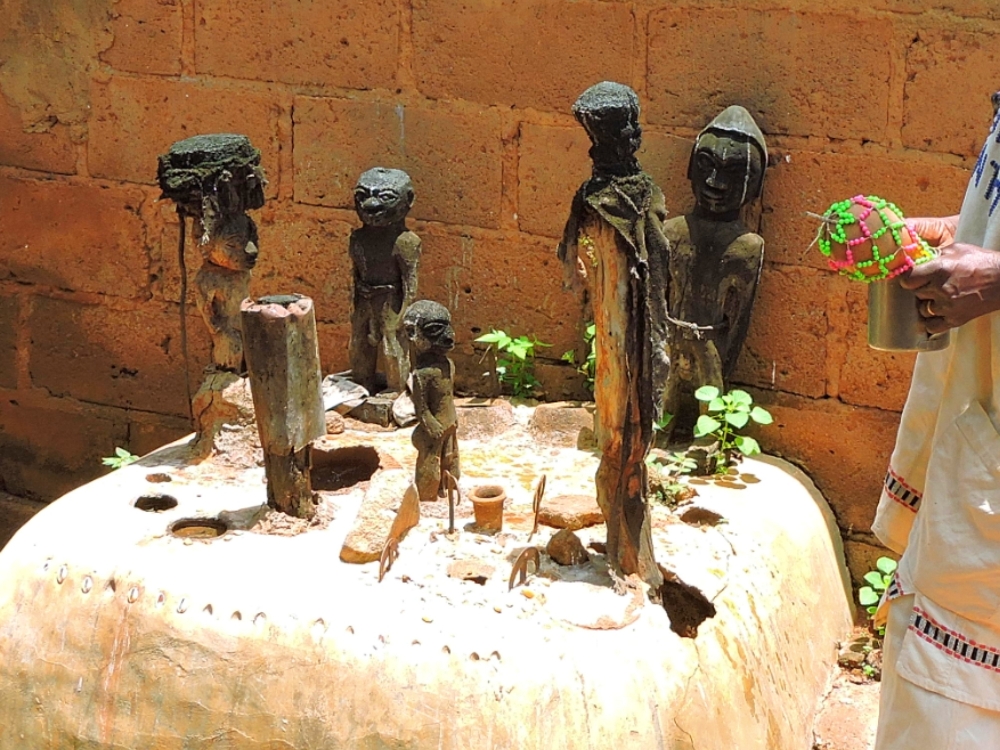
Another historical factor relevant to this area is more disturbing. Modern Benin is in the location of the easternmost of the four Coasts
of West Africa, so named during the early era of European exploitation for the main product each area provided. The Pepper Coast was around modern Liberia, the Ivory Coast, appropriately, at Cotê d’Ivoire, the Gold Coast at Ghana, and finally the Slave Coast was here. With the active participation of the Kings of Dahomey, the former coastal Kingdom of Ouidah became the epicenter for the Trans-Atlantic Slave Trade. Today, at the spot on the beach where the slave ships once departed, a monument named La Port du Non Retour commemorates this sad period in history.
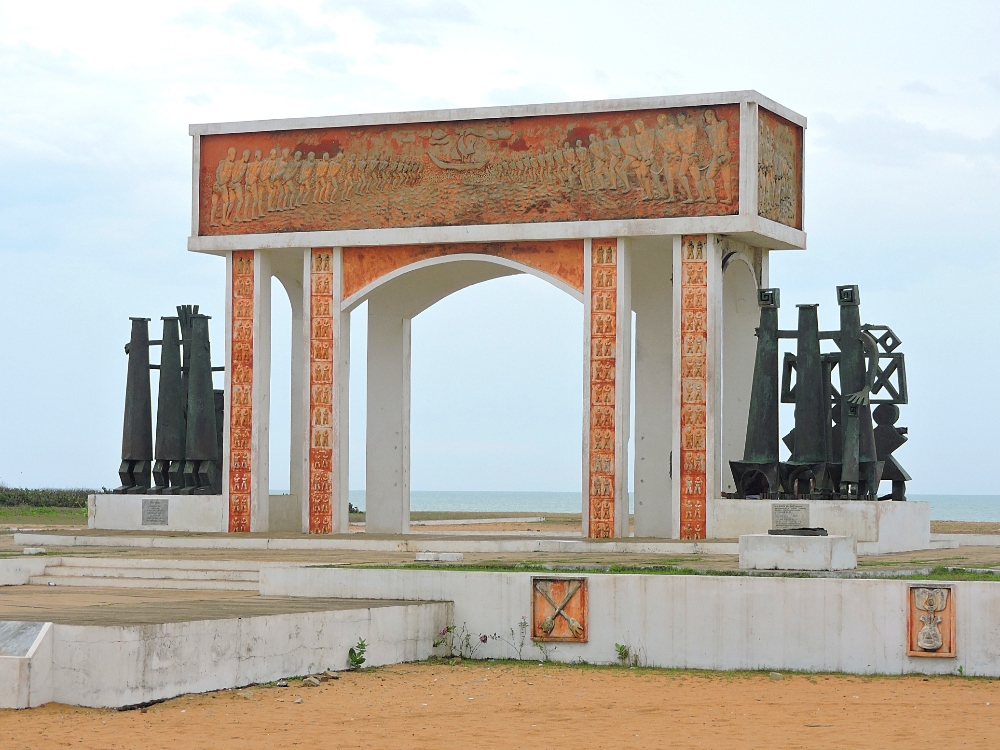
Eventually, it was time to continue to Togo, but only after my departure round of covid testing, which was an exact duplicate of the entry process, except that both sampling and results were done at the Congress, making things doubly slow. However, the most absurd procedure of the entire period was the flight requirement to travel between Cotonou and the capital of Togo, Lomé, two cities separated by only one hundred twenty-six kilometers. Days earlier I was just twenty kilometers from the border, near Ouidah, but, instead of making a simple crossing there, I had in store another bike disassembly and packing, two airports to deal with, and then a bike reassembly, all for a flight that was in the air for a grand total of eighteen minutes. Additionally, this flight was distinctly expensive, costing me $2.17 per kilometer traveled. If someone would pay me that rate for my cycling distance during the Tour, limited as it may be, my accounts would look much better at this point. Nevertheless, I eventually did arrive in the twenty-first country of the Tour, Togo.
Togo’s testing and entry policies were in most, but not all, ways somewhat more efficient. The cost for the entry and exit covid tests was slightly less, at $US 73.00 each, with sampling at the airport upon arrival reasonably quick and easy, and this time the results were back in twenty-four hours, sent by e-mail. Visitors were required to install a variety of a mobile device tracking app, and use that during the length of their stay. Annoyingly, for me, the system only sends users the activation code via SMS, and since my tablet doesn’t have cellular service, I could not receive that. Fortunately, I found someone else who could receive that code for me before I left Benin, so I had it working when I arrived in Togo and was able to pass through the checkpoint where it was required to show that I had the app. Of course, my device needed a hard reset a couple of days later, so the app was inactive after that. Oh, well. Togo has a visa-on-arrival policy, which is great, but there is a catch. Validity is only for seven days, but can be extended for free to a full month. However, to do that requires one to go to the Passport Office, located in the far northern zone of the city, fill in a form, then return the next day to pick up the extension. I was tired after I arrived and decided to stay another full day at the expensive hotel by the ocean that I had chosen beforehand, but I forgot about that additional chore during that extra day, and so I wasted another day afterwards to take care of that annoying task. One wonders why the extension could not be processed at the airport along with the regular visa.
Geographically and culturally, Togo and Benin seem virtually identical to the untrained eye. Both were French colonies, with that language being in official use today. Population densities seemed similar, with most of the people living in or near the coastal cities. Both are small countries, long and narrow, though Benin is slightly less rectangular, bulging at its northern end, giving it a shape slightly resembling a tree. The landscapes of both are similar, generally lying on a fairly flat coastal plane, though Togo possess a few more small mountains scattered around the area. Their biomes are also identical, with formerly humid forests near the coast, with only scattered fragments remaining today, and gradually transitioning to drier habitats towards the north.
However, there was one historical difference between the two nations, and I was curious as to whether there was anything I could observe relating to that. In the 1880s, during the Scramble for Africa, Germany, a late entry to the grimy game of colonialism, established one of its few colonies in the area of modern Togo, then known as Togoland. This was the only one of its occupied lands that Germany paid much attention to and eventually Togoland became self-sufficient, by European standards, and was said to have been one of the most pleasant locations in Africa at the time. Of course, in 1915 the situation changed suddenly when the colony was captured by France and Britain, followed by a formal annexation by France in 1918, and a small sliver of the territory merging with British Ghana. I wondered whether any remnants from that era would be discernable today, but one hundred years under the damp tropical Sun can be fatal to almost any built structure, so I expected that nothing obvious would remain. Indeed only Lomé, definitely a step up in attractiveness relative to Cotonou, might have shown a legacy from that period, and only then in the general street layout of the center of the city.
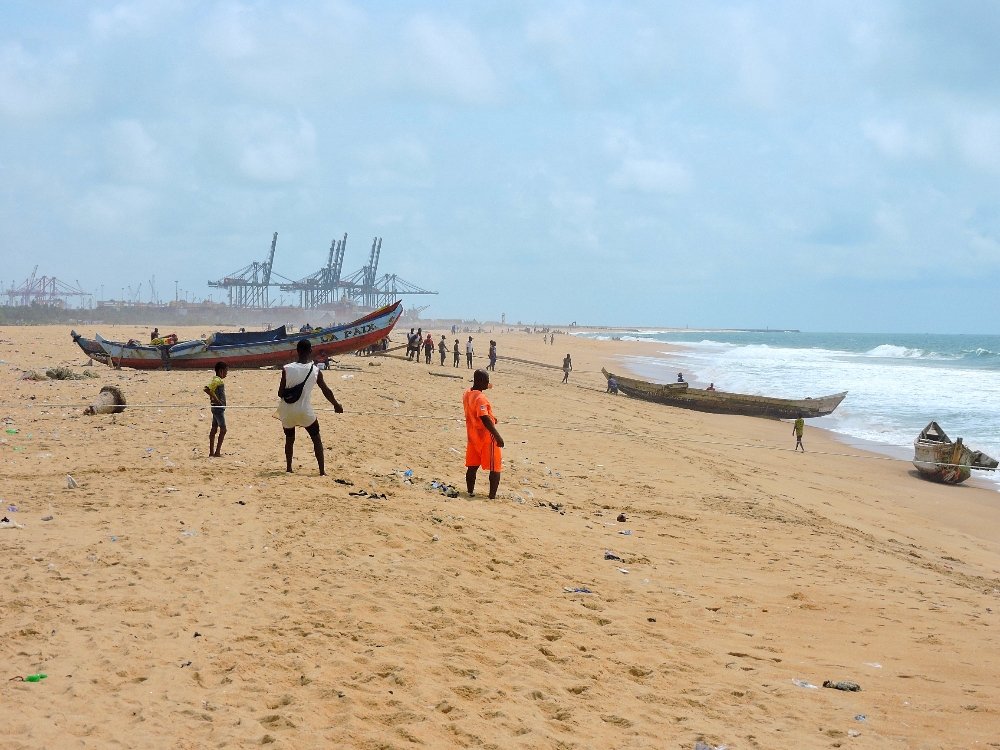
Because of the particular location of the towns and sites of interest, I decided that I would make my ride up to the northern region in Togo, and not in Benin, and once all the formalities were finally complete I was on my way. Two factors impacted my initial enjoyment at the start of my route, however. I was still struggling a little physically, mostly due to the continued heat, though the mildly rolling terrain with a slow elevation gain didn’t help. A noticeable change in the road conditions was an additional detraction. Like Benin, in Togo one primary road leads from the capital city up to the northern zone of the country. In this case, however, the road seemed to have been built years earlier, using a lower standard of construction and with deterioration well underway in places. More relevant was the huge increase in the number of trucks using that lone road. I soon realized that almost all of them were traveling between the port at Lomé and the landlocked countries of Burkina Faso and Mali, further north. Their presence was not enough to make the route unusable, but it came close to that point.
Gradually moving north, the landscape became more like a savanna, but I think that this was due more to human interventions as opposed to climate effects. The only other noteworthy event in this area was reaching the city of Sokodé, the second largest in the country and a rather shabby place, which was, at the time, under a covid quarantine. That was the type of information that one might have found useful, had it been conveyed at the airport upon entering the country. As it was, without that knowledge I was intending to stay there one day, since there were no other options within a reasonable radius, but was delayed for over an hour while the checkpoint obtained permission for me, and my negative test results, to get accommodation there. Several days later, on the return journey to the south, the situation seemed to have been relaxed considerably.
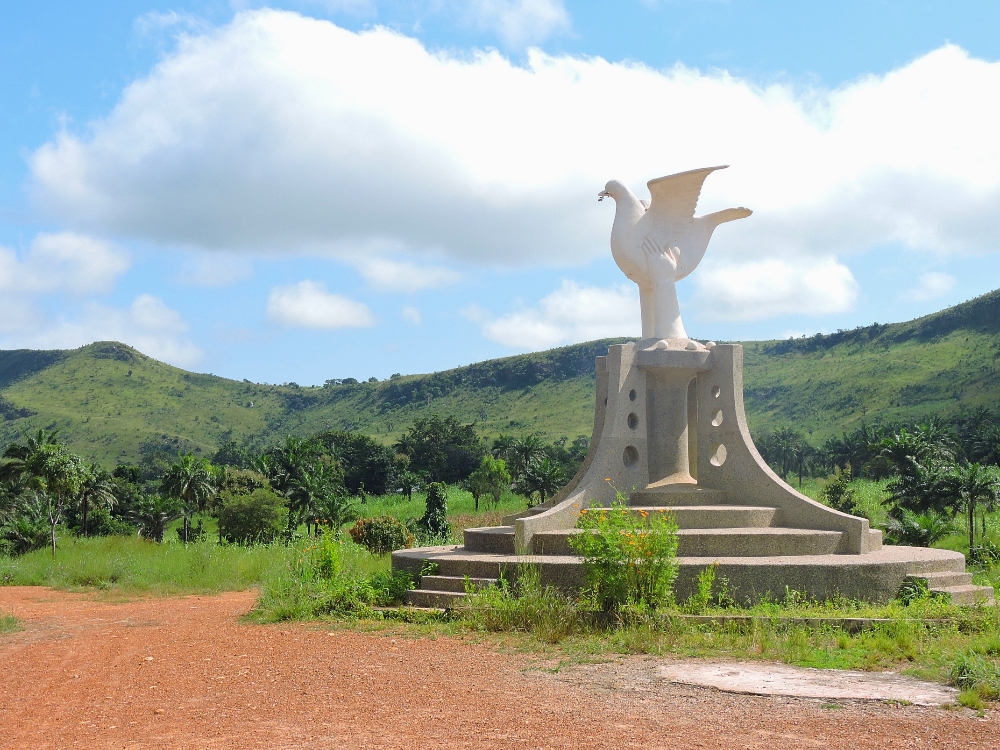
After passing through the large town of Kara, perhaps the nicest town in the country, probably because the president of the country during several decades of the last century, and the current president, his son, hailed from the countryside nearby, the environment continued to change. Savanna began to dominate, but this time it was a true savanna caused by a lower amount of rainfall, and the general environment was quite attractive. I have toured through savanna zones several times on various continents, but always during the brown, dry season. This time, seeing the green countryside during the Small Rainy Season was quite pleasing. Given my slow pace while traveling north, and my level of tiredness along the way, I seriously considered skipping the duplicate ride back to Lomé and catching a bus back to the south. However, just before it was time to turn around, my fitness finally seemed to return, after an absence of a month, or so, and therefore I powered back to the capital without any significant breaks.
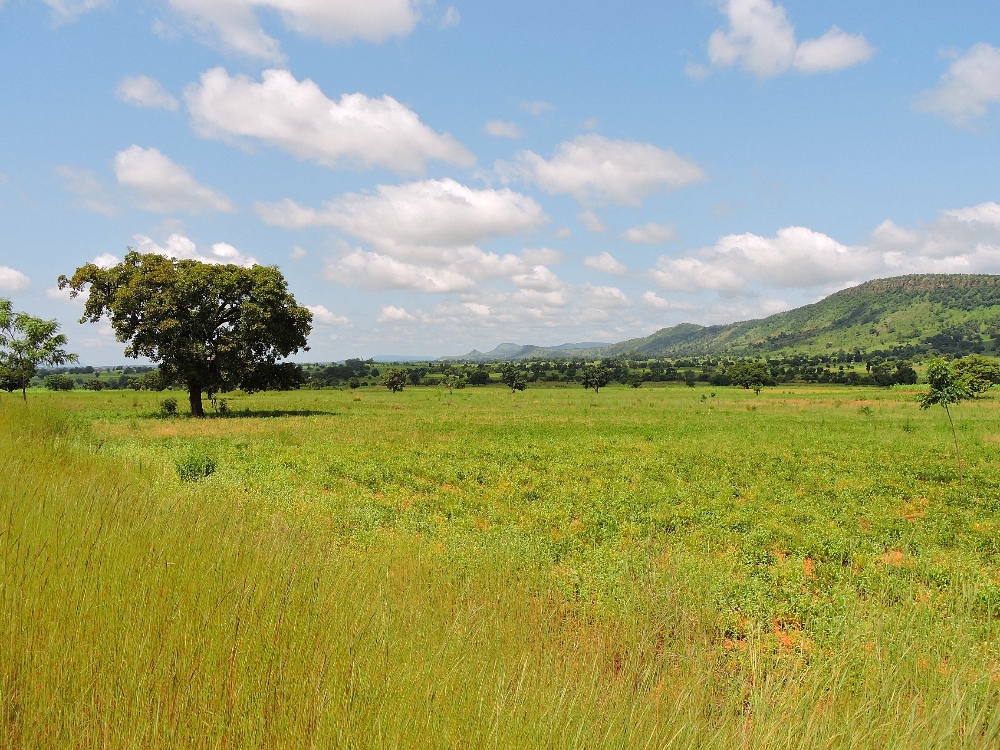
Ghana was the plan for my next destination and of the three countries it was the one I wanted to visit the most, because it has a reputation for reasonably good infrastructure and has several well-developed birding sites. However, that country has also steadfastly avoided modernizing its visa application process, still requiring that applications be sent to the Ghanaian Embassy in the applicant’s home country. As I had not been in North America for over a year, sending a passport back to there, then hoping that it would return safely and promptly, would certainly not be a practical option. One might assume that when recently reopening their country, after shutting down a lucrative tourism industry for several months, Ghana might have been anxious for travelers to return and might have shown a little flexibility with their procedures. I looked into to the situation at the Ghanaian Consulate in Istanbul, but the possibility of success seemed unlikely there. I went in person to the Ghanaian Embassy in Cotonou, but the clerk there wouldn't offer any help. Finally, I went to the Ghanaian Embassy in Lomé, literally located one hundred meters from the territory of Ghana, and was told that they were not yet ready to issue visas, but that I could do visa-on-arrival at the Accra airport. Citizens of African countries have long been able to do that, and I assumed that it was obvious that I was a citizen of another region, implying that other options had recently been put in place for such individuals.
Therefore, with some anticipation, but still some uncertainty, I purchased another expensive airline ticket for another equally brief flight. The ticket agent didn’t want to sell me the ticket without a visa, especially for a one-way ticket. I had them call the Embassy and they were told the same thing that I had been, though they still insisted that I buy a round-trip ticket. At the airport the following day, with yet another negative covid test in hand, a familiar scenario played out: no visa, no boarding. My exposition of what I was told by the Embassy did not seem to help. Messages were sent between the airline and unknown officials of the other country, but soon it became clear that the immovable object of bureaucracy would not yield. And so, Ghana became the Blank Space referred to in the title, and therefore a country that I will likely never have a chance to visit. This time, however, I already had a alternative plan at the ready. To be continued…